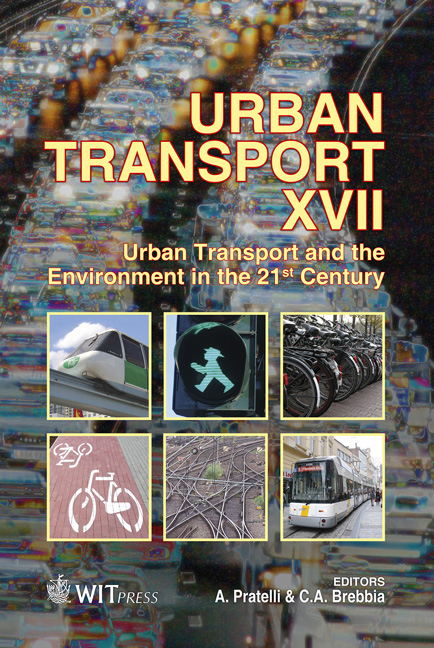Public Transport System In The Capital Of Kyrgyzstan: Current Situation And Analysis Of Its Performance
Price
Free (open access)
Transaction
Volume
116
Pages
12
Page Range
239 - 250
Published
2011
Size
3,354 kb
Paper DOI
10.2495/UT110211
Copyright
WIT Press
Author(s)
A. Kadyraliev
Abstract
Kyrgyzstan, as a ‘post-socialist’ country, experienced the problems common to all such countries when it gained independence in 1991. The country instantly faced new challenges in its transition from central planning economy to an open market economy almost overnight. Change of this magnitude necessitated change in every branch of the economy including the public transport sector. Bishkek, as the capital, faced numerous difficulties in terms of socio-economic conditions. The city needed an increase in transport passenger services but to achieve this, more public transport vehicles were required because of increasing domestic migration concentrated mostly toward the capital. How to do this in an economy facing massive upheaval? This paper examines the current situation of public transport system in the capital of Kyrgyzstan and its changes after collapse the Soviet Union. In addition, this research performs a dynamic analysis of tariff system and changes in number of municipal and private operators’ vehicles, also their performances are included. Keywords: public transport, municipal, private, fare, bus and minibus, urban, subsidy. 1 Introduction Kyrgyzstan is a small country in Central Asia with 5,4 mln population [19]. It is administratively divided into seven provinces (oblast) and twenty-five cities. Bishkek as the capital and largest city in the country has particular importance, both for the cultural and industrial development of the country. However, this dynamic development of the city is hampered by a number of problems. The
Keywords
public transport, municipal, private, fare, bus and minibus, urban, subsidy





